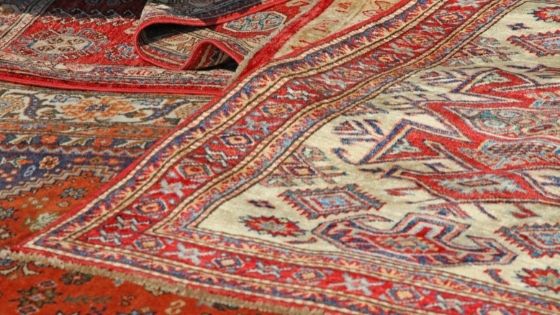Oriental rugs come in many shapes and different sizes. And designs and are woven using various weaving techniques and fibers. No matter what type of Rug you decide to buy, make sure you find out as much as possible about it before buying so that you know what you’re getting into. Luckily, we’ve put together an extensive guide to help you learn everything there is to know about Oriental rugs. From the fibers use to the country of origin and how to find one that will last for years to come. Follow this guide, and you’ll be ready in no time! From the various Oriental rug materials to the different oriental rug designs, you can learn all about Oriental rugs here!
All about Oriental Rug
When choosing a Persian rug for your home, there are several factors you should consider first. Oriental rugs come in various shapes and sizes, with their unique symbols and patterns. Common symbols include dragons, a phoenix rising from flames, flowers, and vines. Once you’ve chosen your design, it’s time to move on to quality. The quality of an Oriental rug is determined by looking at its knots per square inch—KPSI. The higher KPSI a rug has, the better it will hold up over time. For example, a rug with 120 KPSI will be more durable than one with 100 KPSI.
Oriental rugs also vary in terms of uses. While some people choose to use them as decor pieces or area rugs, others prefer them as traditional floor coverings. Whatever you choose, make sure that your Oriental Rug fits well into your home environment before purchasing it! To ensure that your Oriental Rug remains beautiful and lasts long, always store it away from direct sunlight and moisture. If possible, avoid placing it near heat sources (like radiators) because they can cause irreparable damage to wool fibers. Avoid vacuuming your Oriental Rug too often because doing so can cause its pile to thin out quickly.
Geographical origins
The country of origin is important to keep in mind when shopping for Oriental rugs. Different countries are known for different styles. And while you don’t necessarily have to stick with a rug from its country of origin. It’s something that you should take into consideration. Is your living room will be more suited for a Persian-style rug? That may be true—but if it isn’t, perhaps you should go with another option. In addition to thinking about where your Rug is coming from, think about how long it has been there.
A 100-year-old Oriental rug might not look like much now, but over time and after many years of wear and tear, you can see why these carpets can become so expensive! Before buying anything, inspect any potential purchase; no matter where it came from or how long ago it was made. Even Oriental rugs can come with defects. Ask yourself whether or not those flaws will detract from your experience using or looking at the carpet. Remember that while quality doesn’t always equate to price (especially in these situations), value does mean quality – do not spend too much on a defective product!
Care & maintenance of Oriental Rugs
Oriental rugs take a certain level of care and maintenance, whether large in size or age. All Oriental rugs have been made for at least 20 years, and some have been around for hundreds of years. The longer an Oriental rug has been around, the more beautiful and unique it will be. When caring for your new Oriental Rug, it is best to find a cleaning service that knows how to clean them without damaging them properly. While most experts recommend dry cleaning your new Oriental Rug as soon as possible after purchase, you should know that air-drying will extend its life and reduce fading by up to 50%.
It is also highly recommended that you never place your Rug in direct sunlight or near heat sources. Because they can fade very quickly. There are several Oriental rug types, such as prayer rugs and Persian carpets. Oriental rugs are typically high quality due to their fine craftsmanship and intricate patterns. However, not all Oriental rugs create equal. Because there are so many different types of Oriental rugs out there, it is important to research each one before deciding which one you want to buy. Some Oriental carpets are woven with wool. While others use silk or cotton yarns instead. Silk is often used when creating luxury designer pieces. While wool tends to be used more often in traditional designs.
History of oriental rugs
Persian artisans have been weaving rugs since at least 224 B.C., when, according to legend, Queen Parysatis ordered one for her palace. Over time, rug-making spread through Europe and Asia and became associated with all Asian carpets; thus, Oriental became part of their moniker. The most common type of oriental Rug is flat-woven (as opposed to knotted or tufted). Meaning that a flat piece of rug material is hung in place on a loom.
And then threads are woven back and forth across it using a series of hand movements known as ‘weft’ techniques. Flat-woven rugs tend to hold up better over time than knotted ones because they’re sturdier, but they can also look less intricate. Many people think Oriental rugs are made from wool. But wool isn’t actually very durable today. Most Oriental rugs are made from synthetic fibers like polypropylene. Synthetic fibers now account for about 90 percent of all carpet production worldwide!













